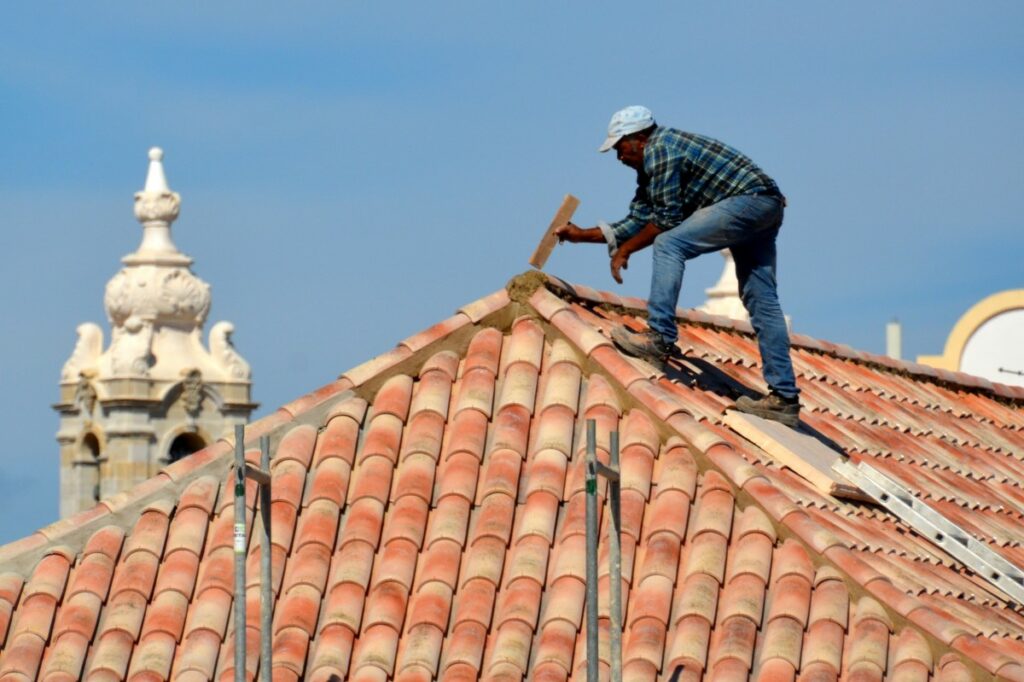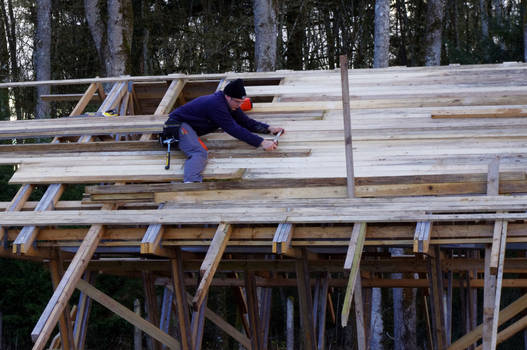Who doesn’t love the warm yet cool moderate temperatures of spring? Roofers also love spring because it’s much easier to inspect and perform any roofing needed to get it back in shape. Regular spring inspections can help prevent costly repairs and extend the life of your roof, especially once the debilitating heat of summer appears. Here are important aspects that make up a precise roof inspection.
1. Safety First
Professional roofers will always ensure your safety. They use a sturdy, roof-rated ladder and wear appropriate harnesses and footwear. If necessary, they will erect scaffolding to reach higher parts of your roof (especially high-slope residential properties). Furthermore, your professional roofers will avoid inspections during wet or windy conditions – which are rare during spring.
2. Exterior Inspection
First, the roofers will check the exterior of your roof from the ground and look for any visible damage, missing or cracked shingles, sagging areas, or signs of wear and tear. Your roofers will also clear all kinds of debris, branches, or leaves on your roof materials and gutter systems.
3. Gutters and Downspouts
Speaking of gutters, these come next in the inspection process. Similar to your asphalt shingles, your roofers will inspect your gutters and downspouts for debris buildup and clear them. If it’s part of your roofing service package, they may also clean your gutters or recommend installing gutter protection that prevents branches and leaves from entering your gutters. They will also ensure that the gutters are securely attached to the roof edge and that the downspouts are directing water away from the foundation.

4. Flashing
The flashing around chimneys, skylights, and vents are the next areas your roofers will inspect. They’ll look for possible signs of rusting, denting, severe damage, or structural deterioration. They’ll need to replace any flashing in poor condition as soon as possible – damaged flashing can lead to water leaks inside your attic and increase your attic’s humidity levels.
5. Shingles
Your asphalt shingles make up the top layer of your roof. Your roofing contractor will carefully inspect the shingles for any signs of cracks, curling, or missing pieces. Next, they’ll look at ridges – the planes where roofing planes meet. Ridges that have ‘moved’ a bit will need readjustment or patching with cap shingles designed to keep them sealed in place.
6. Roof Valleys
Valleys are the opposite of roof ridges – these are two planes that meet and create valley-like formations on your roof. Your roofers will check the valleys as they’re as critical as ridges – they need to be watertight.
7. Skylights
Your roofer will check any skylights for any signs of damage or leaks. The roofers will look for any possible flashing rust or deterioration and structural problems with your skylights. They may apply sealant for minor problems or replace the flashing where necessary to prevent leaks.
8. Attic Inspection
Now that everything on your roof is covered, it’s time to check the bottom layer of your roof – the attic. Your roofers will check for water stains, mold, or mildew and recommend clearing them out. These are the primary cause of poor indoor air quality and possible respiratory issues once mold has grown on your roof. Lastly, they’ll check if your roof has proper insulation and ventilation to prevent extreme heat buildup that can damage the top layer of your roof.
9. Document Findings
You can keep a record of your roof inspection data and photographs from your roofer if you request it. They can send it to you in the form of digital videos and photography, along with written recommendations and overall evaluation of the roof. In the future, this documentation can be helpful for insurance purposes or when hiring a roofing contractor for repairs or maintenance.
Ready to have your roof inspected this spring? You can always count on us at Howard Roofing & Construction. Call us today or visit our social media page to get started!

